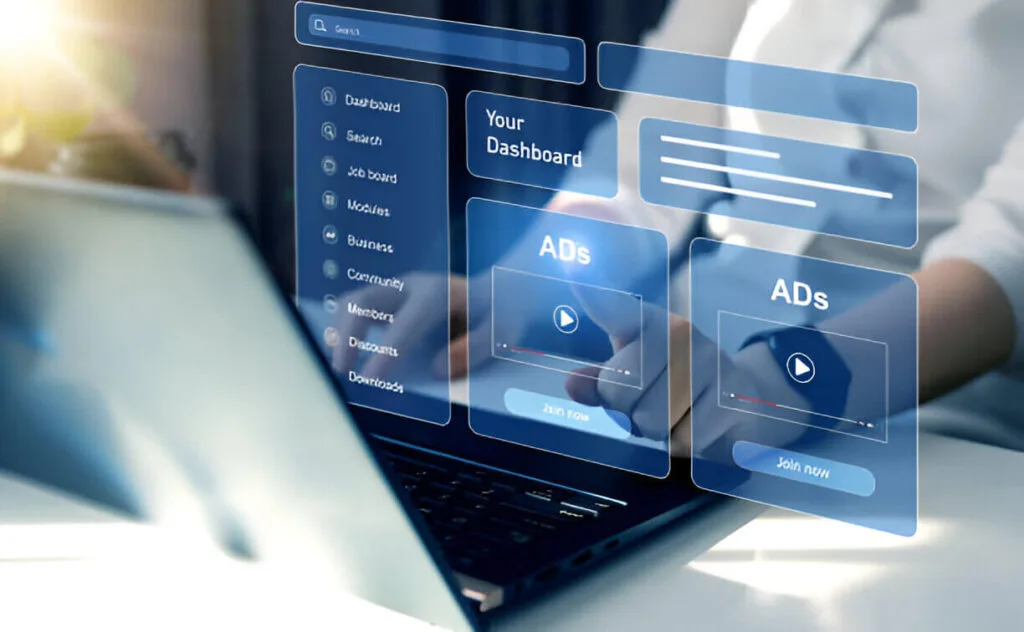When trying to find the ideal paid ad platform for your business, you’ve stumbled upon Google Ads vs Facebook ads crossfire. Do you settle for Google’s high-intent searches or go for Facebook’s treasure trove of personal data? There’s no denying that paid advertising is the key to scaling up your business especially when getting started. But which ad platform between the two will serve your needs best?
Both platforms are popular for their unique strengths and picking one option over the other might feel like choosing a favorite child. Going for both may not also be in your budget, especially if you’re just getting started with paid advertising. No need to worry though, we’ll break down the differences for you to help you choose one ad powerhouse that best suits your business.
Before delving into Facebook vs Google Ads, let’s first understand each of these platforms.
Google Ads: Let Them Search for You
Google Ads capitalizes on users’ search intent, that means those people who are already looking for the product or service in your niche. For example, if a user searches “best vegan bakery near me” on Google, they likely want the vegan cake at that particular moment. Google Ads lets you show them your ads of the same category of product just as they’re ready to place an order.
As a Google-owned and developed platform, there’s almost no limit to where these ads can be shown. They can be displayed on Google search engine results page (SERP) or other non-search platforms, such as videos and mobile apps. Google also has a rich network of websites (over 2 million), named as Google Display Network, where third-party sites display your ads.
Other than these, you also have options to choose other Google products like Gmail and YouTube to display your ads. Google makes it possible to track users’ actions and other important metrics using Google Analytics.
How Does Google Ads Function?
Google Ads is a pay-per-click (PPC) advertising platform, that means, you have to pay only if a user clicks on the ad, no matter where it’s displayed. It offers various types of ads that advertisers get to choose from.
Text-only Ads
The Text-only ads often show on SERP according to the relevance to the user’s search keywords. That brings us to another important thing: you need to choose the keywords to pay for. High-ranking keywords will cost you more compared to the keywords with low search volume.
Google display ads
These are image-based ads, often referred to as banner ads, and they appear on any of the websites within the Google Display Network.
Google shopping ads
Whenever you run a search for a product, say, for example, Nike shoes on Google, you get the first top row populated with products from different stores and their prices. These are the shopping ads.
As we mentioned before, Google Ads has a targeted approach based on the user’s intention. Advertisers can narrow down their target audience using specific keywords, phrases, and demographic information. This includes gender, age, family status, location, and income.
What Makes Google Ads Attractive to Advertisers?
Google Ads excels at offering multiple ad formats and targeting options, each coming with its own unique perks. But the following are its key strengths:
Attracts Audience with High Purchase Prospect
One of the key benefits that set Google Ads apart in this Google Ads vs Facebook Ads comparison is its ability to attract an audience relevant to your campaign. By using the right keywords according to the business niche, you’re able to show users your ads that match whatever they’re looking for.
Users can search for a product, such as a winter coat, click on your ad, and complete the purchase right away. These are known as users with high purchase intent.
Wide outreach
It doesn’t matter who your target audience is, there’s a high chance that you’ll be able to reach them through Google Ads. That’s because Google has a large collection of products, a display ad network, and other platforms to show your ads. With over 5.9 million searches processed by Google every minute, you have a better chance of having your ad displayed to your target audience.
Also, Google Display Network can reach over 90% of all internet users, therefore increasing the chances of your paid ads being seen. Your ads can quickly generate clicks and conversions.
Scalable and measurable
Another major strength of Google Ads is that it makes it easy to tweak your campaigns through data-driven insights using tools like Google Analytics. You can also use the Google Ads dashboard template to keep track of your ad campaigns.
Facebook Ads: Targeted Like a Boss
Facebook Ads is great for targeting an audience at a personal level because the Meta platform collects oodles of user data. From age, birthdays, location, to career, relationship status—you name it. And that’s what makes it a goldmine for marketers who run highly targeted ads. If you’re into selling yoga pants and mats, Facebook Ads can precisely target yogis who just hit the like button of a yoga page.
How does Facebook Ads Work
So, by now, we bet that in this Google vs Facebook Ads comparison, you understand that the former is for search intent while the latter is for targeted ads. But let’s take a deeper look at Facebook Ads.
The targeted Facebook ads appear on all Meta-owned platforms including Facebook and Instagram. Generally, there are several types of ads that you can leverage to show your products or services to your targeted audience:
Image ads
Facebook and Instagram are already great at handling images. So, they offer the best platform to connect to your audience through ad images.
Carousel ads
These are a series of images that users can swipe horizontally to view more of your image ads.
Video ads
If your business prefers to use videos for advertising, Facebook and Instagram allow you to show them to your audience through main feeds, reels, or stories.
These ads appear just like any regular Facebook or Instagram post, except they have a “Sponsored” word description to distinguish them from other posts. Since Facebook holds a lot of personal data about users, advertisers can narrow down their target audience to age, gender, location, and other demographic information. Additionally, you can also use user behavior, interests, visited pages, and friends to show the ads.
With Facebook Ads, you get access to pay-per-click (PPC) and pay-per-impression (PPM) campaigns. While PPC charges you for each ad clicked, PPM charges you for every 1,000 impressions made. Facebook counts an impression when your ad is displayed on the user’s screen.
What Are the Strengths of Facebook Ads?
Combined, Facebook and Instagram offer more than 5 billion active users. This, together with the fact that Facebook Ads are targeted, gives them an edge, compared to Google Ads. Here are the key advantages of Facebook Ads:
Memorable ads for brand growth
With Facebook Ads, you get to create visually striking and appealing ads that excel at attractive audiences faster than Google Ads. Also, the fact that Facebook and Instagram have the largest number of mobile users, makes it easier to reach your audience at a personal level.
The Meta platforms have more eye-catching ads (videos and images) optimized for mobile users to make them more accessible and memorable to users.
Precise targeting
In terms of precision when it comes to targeting an audience, Facebook takes the lead in the Google Ads vs Facebook ads tussle. This is because Facebook uses more personal data such as age, location, relationship status, hobbies, and friendships among others to target users.
On the other hand, Google Ads mostly relies on user intent first to display ads and this makes it less effective compared to Facebook Ads. Facebook takes the ads to targeted people on the Meta social platforms they use every day.
Affordable Entry
Cost-per-click (CPC) is lower on Facebook Ads than on Google Ads. This gives most small businesses a favorable and budget-friendly entry point.
Despite these advantages, Facebook Ads are only great for impulse purchases and building brand awareness. That’s because people aren’t always in a “buy mode” when scrolling the social platforms. As for Google Ads, it’s much better for making sales because when a user searches for a product, it’s highly likely that they want to make a purchase. So, getting actual sales with Google Ads might take shorter than with Facebook Ads.
Cost Comparison: How Far Does Your Buck Go?
Budget is everything to small businesses. If you’ve already set a budget for your ad campaign, how far can it take you when using Google vs Facebook ads? Google Ads can run your ads with a budget anywhere from $2 to $4 across all industries.
On the other hand, Facebook Ads cost an average CPC of $0.26 to $0.30 and $1.01 to $3 for every 1,000 impressions. So, while Google Ads might exhaust your budget quicker, it tends to drive high-quality leads who are ready to convert. Your ad budget will stretch further with Facebook Ads, but you’ll need to do more nurturing.
When to Choose Google Ads vs Facebook Ads?
When it comes to deciding which ad platform between Google Ads and Facebook ads is best for you comes down to your industry, audience, and goals. Generally, Google Ads are great if you’re up for making sales. Facebook Ads, on the other hand, are ideal for strengthening your brand’s online presence (brand awareness) and connecting to your audience on a personal level.
When To Choose Google Ads
Go for Google Ads if:
- Your business relies on immediate intent or local searches such as restaurants or locksmiths.
- Your business is about selling high-ticket products and services in which every conversion counts.
- You’re after a platform that can easily scale with performance-based metrics.
When To Choose Facebook Ads
Choose Facebook Ads if:
- Your business relies on brand storytelling, such as beauty, lifestyle, or fashion products.
- Your products are the type that people can impulse buy, like accessories and gifts.
- You intend to build long-term engagement and brand awareness.
Well, if you’re finding it difficult to choose, why bother at all? Here’s a little secret: you can use both Google Ads and Facebook Ads in tandem. Run Google Ads to capture high-intent buyers searching the web for your products. At the same time, use Facebook Ads to make your brand popular and keep it in the minds of your potential customers.
Verdict: Google Ads vs Facebook Ads—Which One’s Right?
In the end, it seems fair verdict that depending on the advertising budget and business goal, one should choose between Google Ads vs Facebook Ads. The most ideal route to go if you want to make quick sales and build relationships over time is the hybrid approach—use both. That is if you have the budget. But if just getting started, you can begin with a single platform and see how your target audience responds to it.
Need help with setting up your Google Ads and Facebook Ads dashboards? Eaglytics Co. has the expertise to help you carve the best path for your ad campaign. Reach out to us today and let us guide you to your big break.





